See the video that started it all. Credit
Almost 3 months ago we started this project with the goal of determining the effectiveness of the Marine Extractive Reserve of Corumbau (MERC) in Northeastern Brazil as a conservation strategy; in particular, its ability to improve the biomass of commercially important fish species while addressing the intertwined socio-economic issues of this region. After many coffee-laden afternoons and evenings we conclude that the MERC had short-term biological successes with regards to species within the snapper-grouper complex, and improved the organizational capacities of the communities in Corumbau. However in general, the MERC came up short on its ability to improve the livelihoods of the artisanal fishers of the area by failing to generate additional income through fisheries products. If we’ve “hooked” your interest on how we came to this conclusion, then read on as we guide you through the issues that led to the creation of the MERC, discuss the biological, social and economic impacts of its implementation and finish with our conclusions on what could be improved in the reserve for the future.
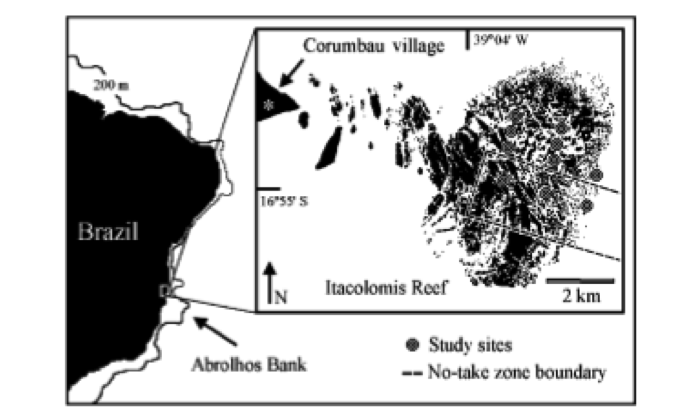
Map showing Itacolomis Reef.. The main fishing village near Itacolomis Reef (Corumbau) is highlighted (8).
Corumbau is within the Abrolhos Bank region off the Northeast Coast of Brazil, an area with beautiful reef systems that are home to numerous endemic and tropical species. The local fishers of Corumbau noticed in the 1990’s an influx of foreign fishing vessels occupying their coastal fishing grounds and appealed to the government to establish a marine extractive reserve (MER) (6). In response to this, the federal environmental agency IMBAMA (now IMCBio), the Brazilian government and Conservation International (C.I) jointly established a MER in Corumbau in 2000, and added an embedded no-take zone in 2001(6). This conservation management strategy aimed to replenish and repair the degraded coral reef and fish stocks of the area, by excluding foreign fishing vessels and prohibiting destructive practices, while maintaining the artisanal fishing efforts of the local communities, who now have exclusive fishing rights. A deliberative council composed of NGO’s, government representative and local fishers, who occupy 50% +1 of the chairs, oversees co-management of the MERC (1). A series of studies undertaken in the following years by C.I and independent researchers aimed to determine the impacts that the MER had generated on the biological systems and on the surrounding local communities.
Biological Impacts
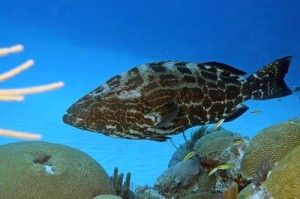
Mycerteroperca bonaci (Black Grouper) Photo Credit Ron Lucas
A no-take zone, free from fishing pressures, has the potential to benefit a multitude of species; based on this, we decided to focus on the commercially important fish families of grouper and snapper, who also exhibit similar life-history traits (8). We defined biological success as evidence of a spillover of these species into the extractive regions, and quantified this based on the metrics of presence, abundance and biomass of these fish. While no data was available for these metrics prior to the reserve’s establishment, studies conducted from 2000 to 2005 showed a measurable increased abundance and presence in two species during this time period.In particular, the black grouper, Mycerteroperca bonaci, increased 30-fold during the study duration from 2000-2005 in comparison to the control site (8). The yellowtail snapper, Ocyurus chrysurus, increased 3.5-fold in abundance
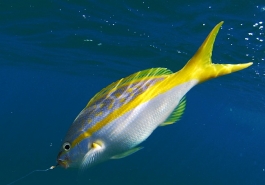
Ocyurus chrysurus (Yellowtail Snapper) Photo Credit Jason Arnold
within the no-take zone and showed an associated increase in biomass from 2001-2004 (8). In comparison, the dog snapper, Lutjanus jacu, had the highest distribution in the nearby open-access reefs when no fishing restrictions were applied, indicating that fishing pressure may not be the only determinant of fish presence (8).
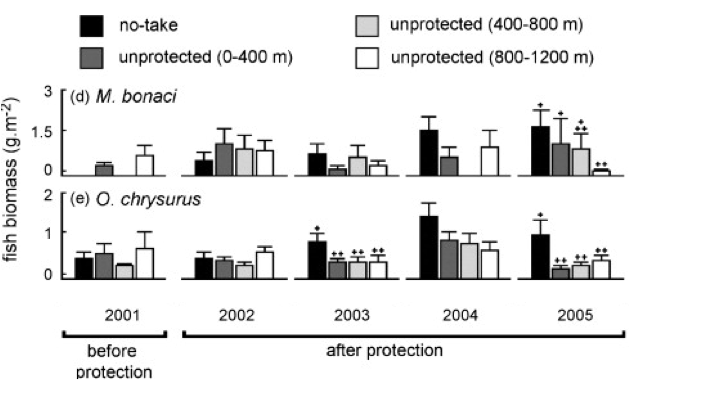
Biomass (mean +/- 95% confidence intervals) of M.Bonaci (black grouper) and O.chrysurus (yellowtail snapper) across the no-take reserve boundary for 5 years.
During the same study period reef habitat quality and composition was examined as a potential determinant of fish assemblages within the MERC. The study highlighted that some of the main predictors of where fish were found, or where they were largest, was correlated with the depth of the reef, the amount of fleshy algal cover and the distance from the shore (8). In fact black grouper and yellowtail snapper were found to have their highest biomass’ associated with deeper reefs (8). This is an important factor since the major no-take zone, the Itacolomis reef, is a shallow reef system that has experienced significant degradation.
Based on our analysis of the studies conducted from 2000-2005 we concluded that the implementation of the MERC had short-term biological impacts on the focal species of grouper and snapper. The black grouper and yellowtail snapper showed increased abundance and biomass within the no-take zone, results consistent with our metrics of success regarding presence, abundance and biomass. However habitat quality may present a variable that inhibits the success of the no-take zone as a refuge for reef fish due to significant degradation and shallow waters. Finally, the long-term success of this project from a biological perspective declined due to data deficiencies and the decrease of focal species from socio-economic influences after 2005.
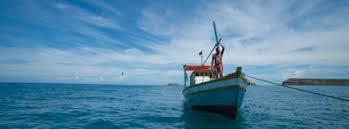
Fishing Boat in Abrolhos Photo Credit C.I
Economic Impacts
We defined economic success as the ability for increases in commercially important species within the reserve to translate into additional income for fishers. We quantified this by using the metrics of fishing yields, catch/unit effort, market value and accessibility. Data was completely lacking for catch/unit effort and fishing yields from before the reserve’s implementation to present (1990’s-2000), while data regarding fishing yields after 2000 were only based local fishers impressions. Based on this limited information, we found that fishers catches increased in the first 2-3 years of the no-take zone establishment (2001) and have remained comparable to historical catches since then (1,6). It became apparent to us that having more fish did not translate into more money.
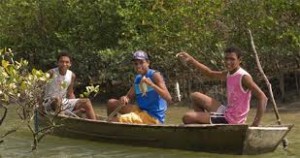
Artisanal Fishers in the Marine Extractive Reserve of Corumbau Photo Credit C.I
We found that the project’s inability to improve the infrastructure of the communities surrounding the reserve had strong ties to the lack of improvements in market value and accessibility to fishers. Essentially, a lack of fisheries related infrastructure: freezers and fish storage plants, meant fishers relied on middlemen to purchase their products, these middlemen, not the regional market dictated the product prices (7). Compounding on this, poorly maintained roads and a lack of public transport meant that fishers could not sell their products beyond the local scale (3). The tourism industry also presents a challenge to local fishers as this industry has driven up the land prices of the coastal region forcing fishers to sell their plots and move inland away from the reserve (3). Based on the above described information, we concluded that the reserve had short-term economic success with regards to fishing yields, but failed to be successful throughout the project with regards to market access and value of fishing products. To rectify this situation C.I. is currently investigating the feasibility of certifying the fisheries (7).
Social Impacts
Social success was defined as improved community commitment to conservation and increased social organization within Corumbau. Degree of local participation in decision-making, degree of self-monitoring, and knowledge of local rules and regulations were chosen as metrics for quantifying success. Participation in decision making was higher for men in
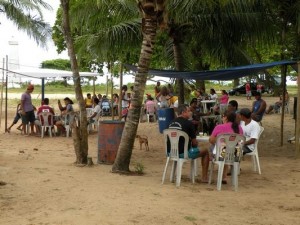
First Festival of Fisherman of Corumbau October 2013 celebrating with music, a barbecue, and raffle giveaways Credit Portal Journalismo com credibilidade
general throughout the region compared to women (4,5,1,8). Lack of participation in men was mostly due to the irrelevance or slow progression of topics discussed in deliberative council meetings; while for women, it was based on limited access to the meetings, or the fact that women did not feel comfortable speaking out in this particular setting (1,12,11). On a positive note, since these studies were conducted the communities of Corumbau and Cumuruxatiba have made significant strides to increasing women’s participation in meetings. Self monitoring has been moderately successful due to continued initiatives of C.I and ICF Canada up until 2008, with substantial self-monitoring programs in the communities of Bugigão and Caraíva (7,10). With regards to awareness of rules and regulations, results prior to 2005 indicated low levels of awareness. This trend may have improved, since more officials dedicated to promoting awareness were implemented in 2002; however, results have yet to be published (7,12). Based on our above described results we concluded that the MERC showed some degree of success within the social sphere with regards to improvement in women’s participation, community organization and self-monitoring initiatives.
As with any long-term community-based conservation initiative, we recognize that even after nine years, the MERC is still in its initial stages. The barriers impeding long-term success of the MERC are caused by a series of complex issues with no panacea: poor infrastructure and conflicting industrial priorities, gender inequality, political and economic fluctuations and mitigating the impacts of artisanal fishing. Despite these challenges, we have concluded that the implementation of the MERC demonstrated initial success through increased biomass of several commercially important species, M. bonaci and O. chrysurus, although this did not translate into economic gains due to poor infrastructure and product marketing abilities. In the social sphere, some success has been demonstrated in the increase of female participation and self-monitoring. Our recommendations for the future include the placement of no-take zones based on habitat quality, the increased focus on the development of fisheries-related infrastructure and the strengthening of socio-organizational capacity of the community as a conservation unit. This project enlightened us about the challenges that communities face in establishing a MER, and that conservation success goes beyond the biological scale.
For more information visit Conservation International
Want to get involved or visit a MPA in Brazil? Click Here for a list of reserves
References Cited? Click Here


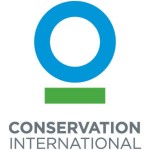
 Follow
Follow